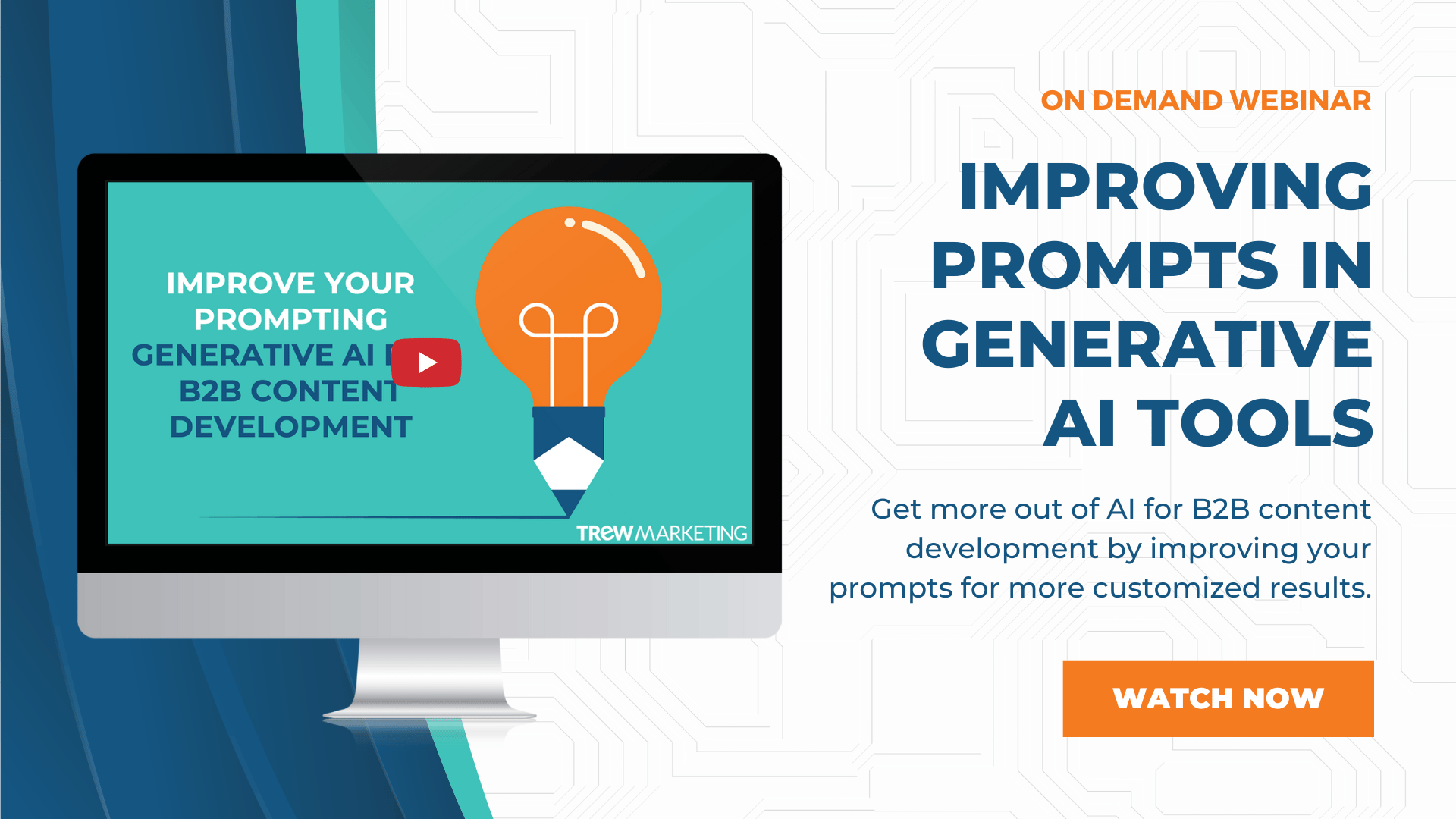Generative AI has the potential to revolutionize technical B2B content development, allowing businesses to produce high-quality content faster and cheaper than ever before. But, like all new tools, AI platforms aren’t error-proof.
.webp?width=1000&height=600&name=Generative%20AI%20Gone%20Wrong%20For%20B2B%20Content%20Development%20(1).webp)
Primary challenges of AI-generated content
With AI-generated content, some of the most significant issues are a lack of understanding of the technology or prompt given, generalized answers that result in incorrect information, and a lack of context or human intuition.
Here are a few recent examples of AI gone wrong for technical content development.
Lack of understanding results in image problems
AI tools lack an understanding of complex topics, which can lead to oversimplifications and misunderstandings in content. For example, an AI algorithm may have difficulty interpreting subtle nuances in language or accurately generating specs or measurements.
A colleague shared this image when searching for images of “chicken nuggets on a production line” for a client that works in food processing. She was envisioning breaded chicken, possibly dinosaur-shaped, but got this instead:

Another AI image issue is with hands:
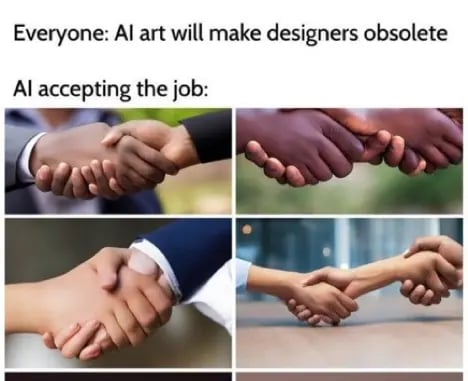
Why are hands still awful in AI-generated photos? Think of the photos you take – hands aren’t typically the feature of a photo. Instead, they’re in the background, obscured, or holding something (sometimes another hand). The datasets AI uses for photos have the same lack of definition for hands, resulting in photos with questionable numbers of fingers or joints.
In another example, the pandemic prevented fans from attending soccer games and the Inverness Caledonian Thistle FC implemented an AI-assisted ball-tracking video tool. The technology was designed to follow a ball around the field, keeping viewers centered on the action of the game.

However, the camera continued to redirect to the bald head of an official on the sidelines.
Generic rewording creates new (incorrect) information
Another challenge associated with AI generated content is its generality. AI algorithms are programmed to operate on general rules and instructions, so they may not always be able to capture the specificity required for certain tasks such as B2B content development. This could lead to overly generalized statements that lack accuracy or relevance for the target audience.
Legal content is certainly complex, and in 2023, a lawyer used ChatGPT to research legal case precedents for a suit against a Colombian Airline – six of the cases submitted included false information, docket numbers, citations, and quotes.
Here’s another example. As an answer to “Where is TREW Marketing located?” Chat GPT responds:
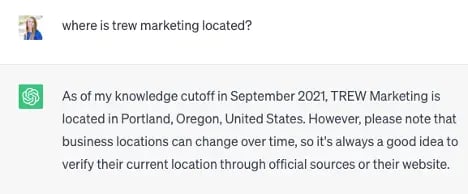
Which is completely odd as TREW Marketing has never been located in Portland. Not before 2021, and not after. We’ve never even had a remote employee who lived there!
Lack of context and human oversight results in poor connection with prospects
The lack of creativity and originality is another issue when using AI for B2B content development. As AI algorithms lack human intuition and imagination, they are unable to produce unique ideas that resonate with readers or create an emotional connection with them like a human writer might be able to do. Without this creative element, it can be difficult for brands to stand out from competitors who also use AI-generated content.
Simple chatbots that haven’t been programmed for multiple conversation scenarios cause trouble for users. You can see here that a simple conversation about what is permitted in an event venue becomes increasingly frustrating for the customer.
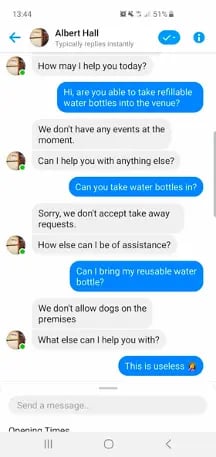
For this reason, we don’t typically recommend that companies selling highly complex technical solutions use chatbots for prospects. The questions that come to these companies during the buyers journey are nuanced and need the expertise and care of a human to answer. A better tool here would be to use a scheduling tool like Calend.ly to allow prospects to schedule time with an expert sales engineer and ask their questions then.
Here is another interesting example – when asking an AI tool to write for me some of the benefits about using AI for complex, technical B2B applications, it gave a wordy, near unreadable response. But, the worst part is that it inserted another company’s product as an example.

The product it features is a meeting transcription service. If I would have used this as a technical example, it would not have shown that I understand the challenges our clients face. This product placement also poses a future risk – will AI content generators eventually accept pay for placing brands in relevant answers? While that seems unethical now, it could be a way they monetize in the future. It would be easily measurable based on results the tool serves to users.
But, if you’re worried about generative AI taking over, rest assured that ChatGPT failed a recent medical exam and isn’t winning with its dialogue scripts.
Developing a plan for smart AI usage in B2B content development
Where do we go from here? Developing a plan for smart AI usage in B2B content development is essential for companies looking to leverage the benefits of AI and machine learning tools, while avoiding potential pitfalls associated with a lack of understanding, incorrect information, or lack of context.
So, on a more serious note, the top two actions you can take to ensure sure you don’t fall victim to AI failures, are to create a policy and learn to write better prompts.
- Create an AI policy: Building a corporate policy allows you to decide what and how you will use AI tools. It also reminds employees that human involvement is critical at every step when using AI tools.
- Improve AI Prompts: The better your input to an AI tool is, the more accurate, useable, and helpful the output will be. Learn to engineer your code in a way that will benefit your content.
TREW is a marketing agency dedicated to reaching engineering and technical audiences through a range of marketing initiatives. Contact us today to learn more about the services we offer.
SUBSCRIBE TO OUR BLOG FOR THE LATEST UPDATES
Morgan Norris
 Morgan believes that the process of brand positioning and messaging powers companies by aligning corporate leadership, building a story that fuels staff and engages customers, and creating a foundation for consistent content – and she’s seen these results come true for TREW clients time and again over the last decade. She holds degrees in Public Relations and Spanish, with a minor in Business from The University of Texas at Austin. Morgan, her husband, and three kids recently moved from Austin to downtown DC, where they enjoy walking the city, visiting the local museums, and playing a guess-who-is-in-that-motorcade game.
Morgan believes that the process of brand positioning and messaging powers companies by aligning corporate leadership, building a story that fuels staff and engages customers, and creating a foundation for consistent content – and she’s seen these results come true for TREW clients time and again over the last decade. She holds degrees in Public Relations and Spanish, with a minor in Business from The University of Texas at Austin. Morgan, her husband, and three kids recently moved from Austin to downtown DC, where they enjoy walking the city, visiting the local museums, and playing a guess-who-is-in-that-motorcade game.
About TREW Marketing
TREW Marketing is a strategy-first content marketing agency serving B2B companies that target highly technical buyers. With deep experience in the design, embedded, measurement and automation, and software industries, TREW Marketing provides branding, marketing strategy, content development, and digital marketing services to help customers efficiently and effectively achieve business goals.




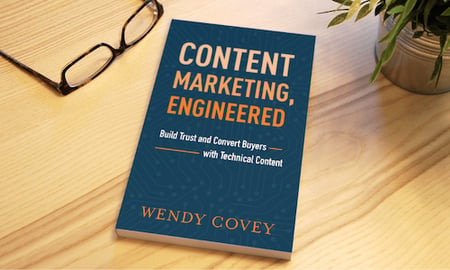

 Morgan Norris
Morgan Norris
